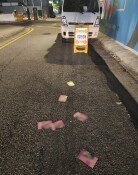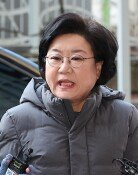Ten forced labor victims agree to receive government compensation
Ten forced labor victims agree to receive government compensation
Posted April. 14, 2023 07:49,
Updated April. 14, 2023 07:49
The South Korean government confirmed that 10 out of 15 victims of forced labor during the Japanese colonial era, to whom the Supreme Court ruled in 2018 that damages shall be paid, agreed to receive the damage compensations from the government as per the so-called “third party compensation” proposed earlier. With this, most of the related victims and families have chosen to receive the government-funded compensation.
The government plans to pay 200 million to 280 million won in damages and five-year interest in arrears to eight victims’ families each. Earlier this week, the other two families already received compensation. With the payment of damages completed on Friday, compensation procedures will be closed only to the victims who agreed to receive the compensation. It has been a month since March 6 when the Foundation for Victims of Forced Mobilization under the Ministry of Public Administration and Security officially announced to pay damages and delay charges to 15 victims of forced labor on behalf of the case's defendants or Japanese companies. Nevertheless, given that the rest of three victims and family members of the two deceased still refuse to receive compensation, the government may have to find ways to persuade them.
According to relevant information gathered by The Dong-A Ilbo as of Thursday, 10 victims and families submitted applications and other documents to the foundation and the government earlier this month to receive compensation. Following the government's solution announced on March 6, a legal agent on behalf of the victims said that four families would accept compensation as proposed by the government. However, a larger number of victims turned out to accept the proposal. The applications submitted to the government wrote that the victims would receive monetary damages as per the relevant ruling instead from the South Korean government.
Recipients of the damages include victims who were forced to work in factory lines in Hiroshima and Nagoya for Mitsubishi Heavy Industries and bereaved families of forced laborers working for Nippon Steel Corporation. The victims won lawsuits against the defendants in the Supreme Court in October and November 2018, respectively, based on which the Japanese businesses are responsible for paying damages.
Although the damages compensation process has gained some momentum, the government is still faced with critical challenges that make it difficult to resolve the forced labor issue. Critics maintain that Japan needs to respond sincerely, apart from compensation payments. Having said that, there has been no apology from the Japanese government or monetary contributions by the defendants. What's worse, the government feels even more burdened with damage payments as only a few South Korean businesses classified as beneficiaries according to the 1965 postwar agreement between Korea and Japan have made contributions to the foundation's funds – except POSCO that paid four billion won.
Na-Ri Shin journari@donga.com




![반찬통 착색 고민 끝…‘두부용기’ 버리지 말고 이렇게 쓰세요 [알쓸톡]](https://dimg.donga.com/c/138/175/90/1/wps/NEWS/IMAGE/2026/01/09/133126593.3.png)


